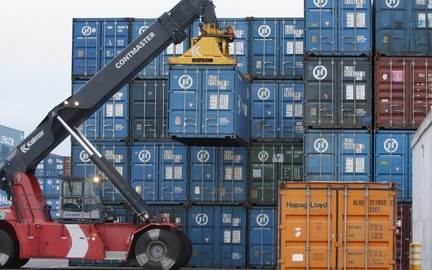Are You Prepared to Optimize Inbound Freight?
Long before my career in software began, I was introduced to inbound logistics while working for a building materials wholesaler. We hauled most of the inbound product with our own trucks. When I asked Mr. Krietzer, the owner of the company, why we bothered hauling in our own product, he told me, “the freight allowance covers my salary.” His motivation was strictly the lucrative freight allowance – nothing more. Frankly, I believe Mr. Krietzer actually preferred not having to manage that private fleet.
Before you follow in Mr. Krietzer’s footsteps and take over control of your inbound freight or consider optimizing your inbound freight, here are seven questions to ask.
Does your organization have the ability to change? Do you have buy-in from the stakeholders? Purchasing plays a large role in a successful inbound logistics project.
Are your organization and systems dynamic enough to react? Things will happen. Some things will be out of your control. You’ll need systems, processes and people in place that can handle the exceptions.
Do you have the tools to make smart decisions about inbound transportation optimization? I once worked with a large retailer that had just implemented inbound optimization. They were not seeing the savings that they expected. After reviewing their daily processes, we discovered their planners were planning twice a day. Once the planners started planning only once daily, savings nearly doubled.
How strong is your complete solution? Full end-to-end transportation management planning and execution is required for optimization – from data integration, vendor access and compliance, planning, visibility, invoicing and analytics. Take, for instance, handling parcel, LTL, truckload, rail, ocean and your private fleet all in the same planning session. The ability to mode-shift is critical to inbound freight savings.
Are you able to make decisions fast enough? The speed of optimization is always important. Users need to do their job quickly, and systems need to be updated timely. Plans change rapidly, exceptions occur, so reactions must be fast and accurate.
How can your organization make improvements to your inbound optimization? Make sure your system can measure performance, define improvements and also feed those changes back into the system. This is called embedded analytics; it can be used to drive changes from planning to freight payment. A simple, yet effective way to manage costs could be to incorporate your carrier selection using lane goals that are updated automatically based on actual costs. Or, reward your carriers with quicker payment based on their performance.
Finally, what’s in it for you? I’m sure my former employer, the building supply company, had a minimum freight allowance that would have been acceptable or it just wasn’t worth it in my bosses mind, even if there was an ROI.
Carefully answering these seven questions will deliver the capability, knowledge and power to improve. Being smarter, stronger, faster, better with inbound optimization will provide payback in many areas, but at the end of the period, those paybacks will show up on the bottom line of your financials.
by Jim Geer
August 19th, 2014
Retrieved from: http://logisticsviewpoints.com/2014/08/19/are-you-prepared-to-optimize-inbound-freight/



